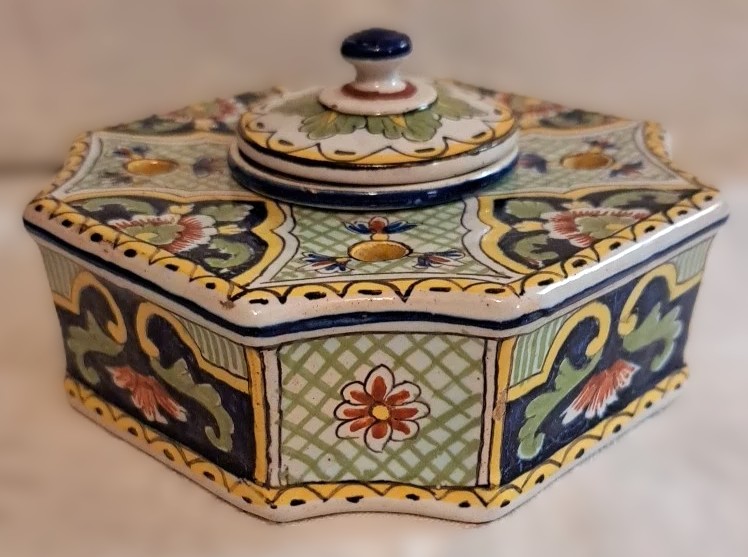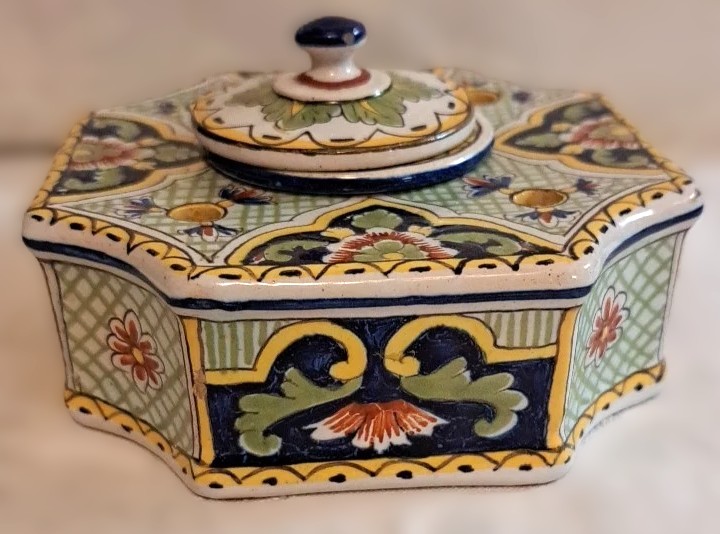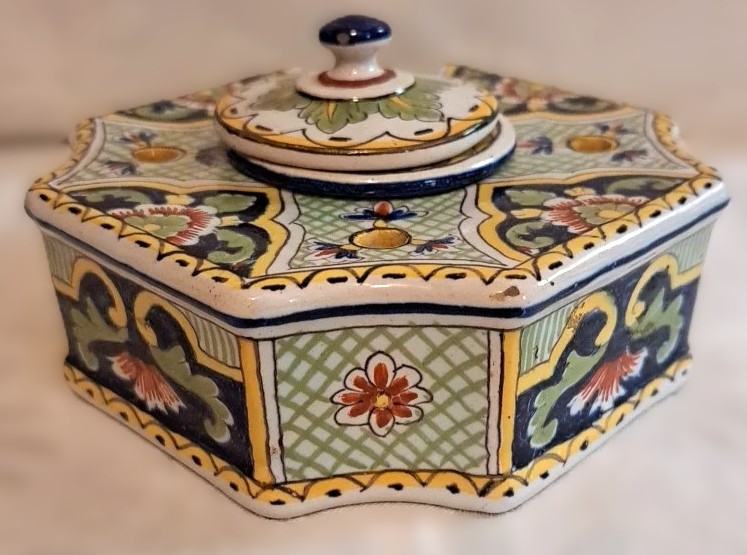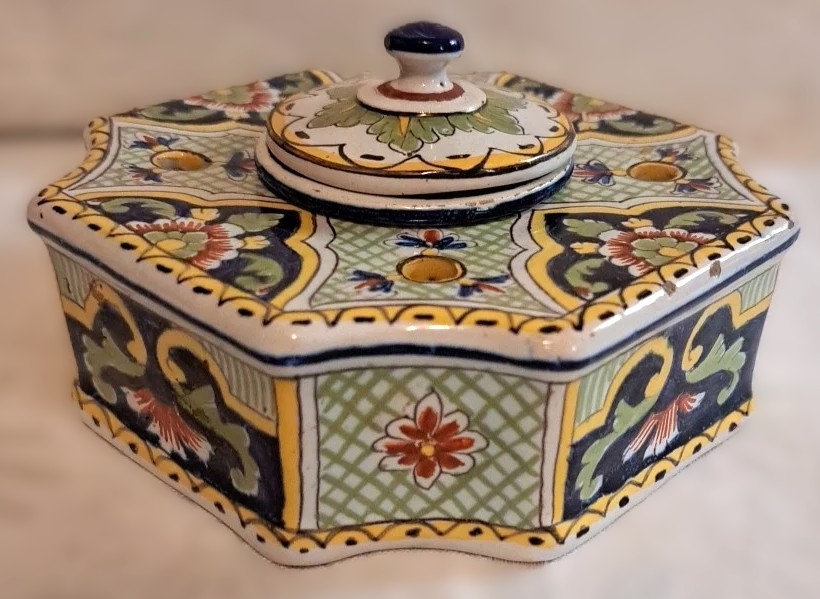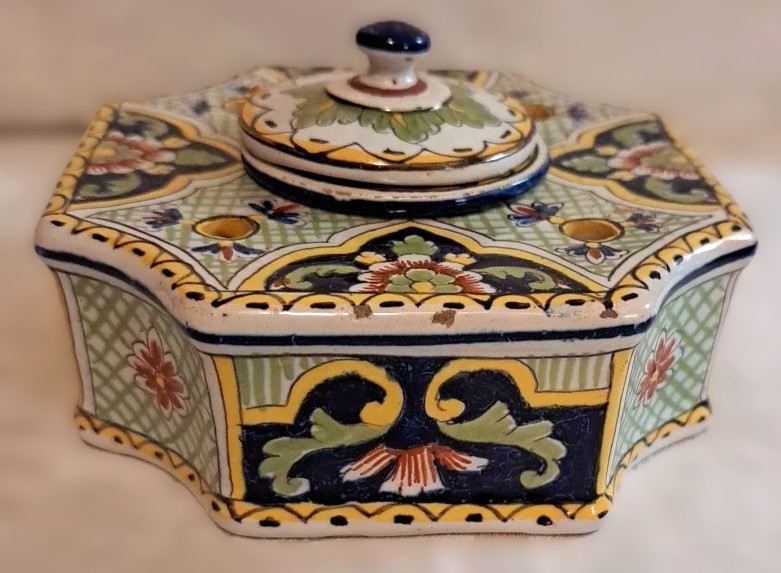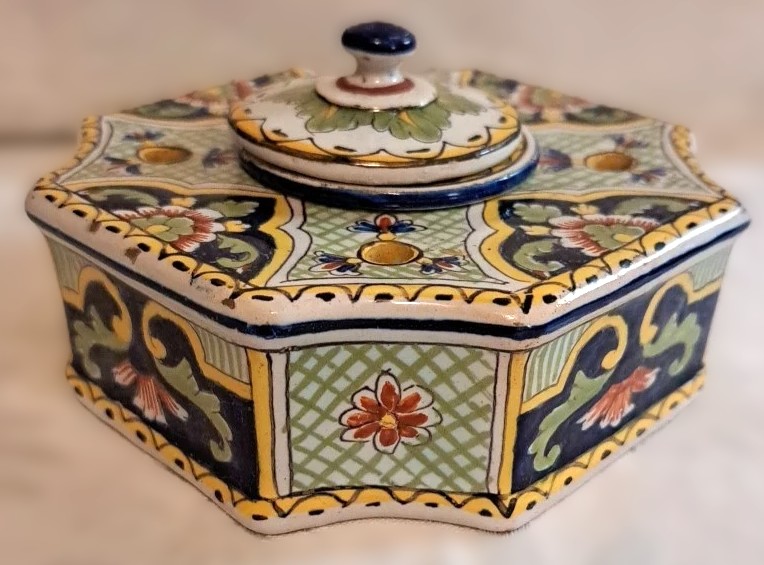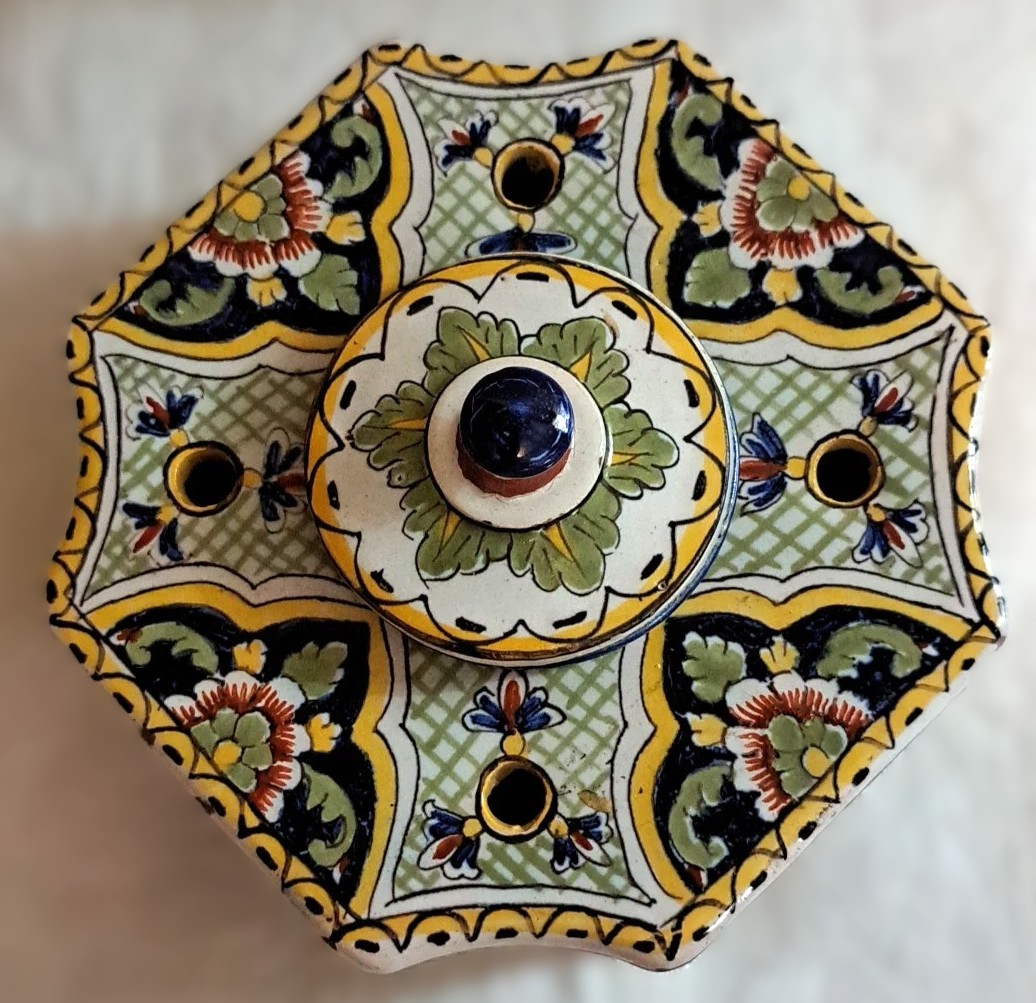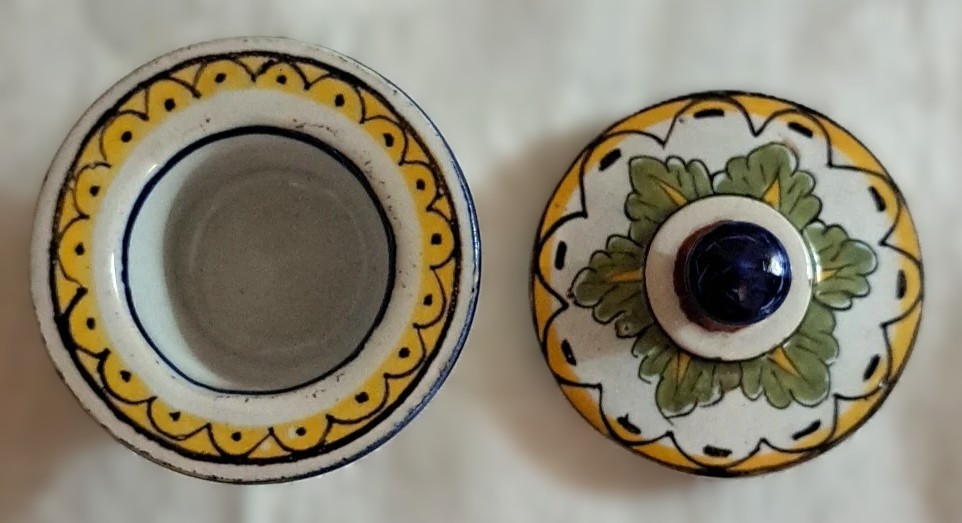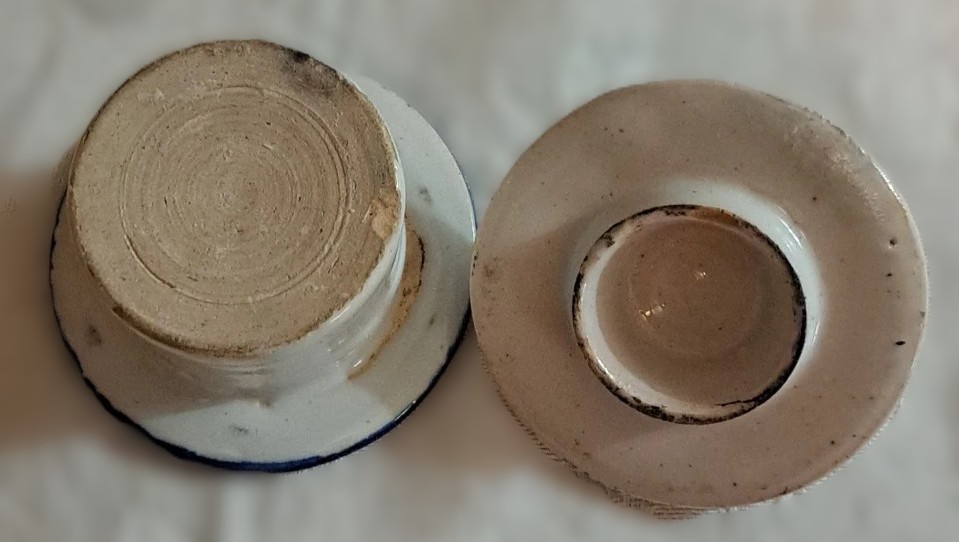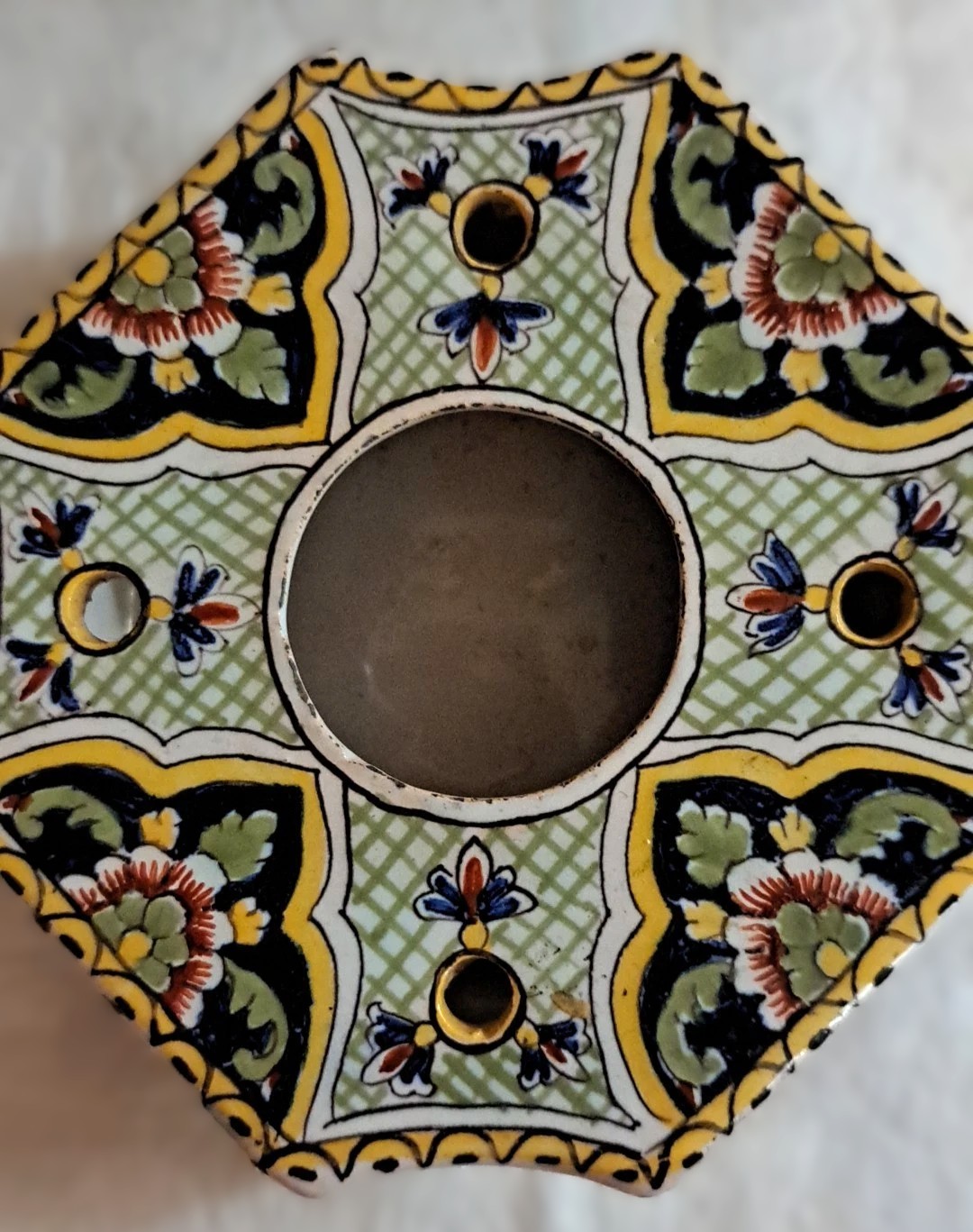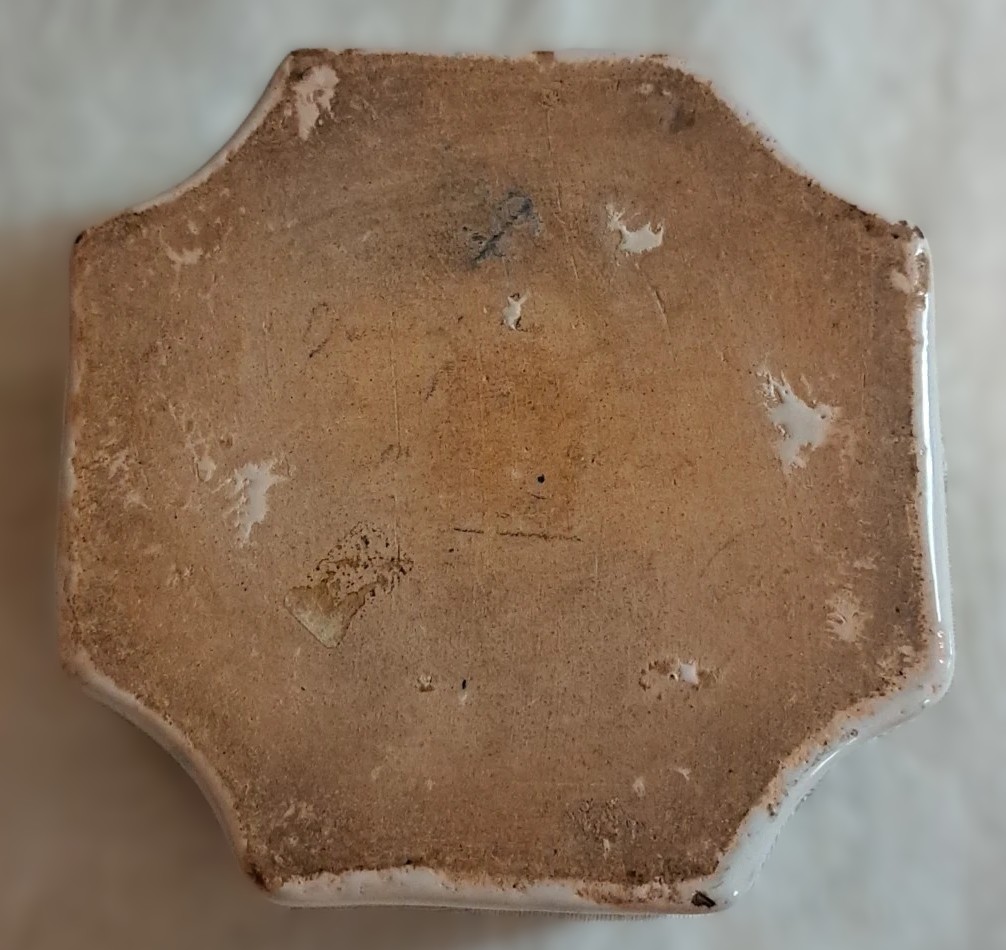
French Faience Inkstand
| Categories | Ceramics/Porcelain non-Figural |
| Material | Faience Pottery |
| Markings | Unmarked |
| Manufacturer | Undetermined |
| Origin | France |
| Date or Era | circa 1890 |
| Measuring | 4 ½” x 4 ½” |
This is a three-piece faience (tin-glazed earthenware) inkstand, likely French, that consists of an octagonal base, a central inkwell, and a fitted lid for the inkwell. It has a distinctive and vibrant color palette featuring a soft, creamy white ground color with hand-painted accents in rich yellow, cobalt blue, manganese purple, ochre, and green.
- The Octagonal Base
- Shape and Structure: The base is octagonal. The top surface features a central circular recession designed to perfectly seat the inkwell.
- Quill Holes: Around the rim of the base, there are four holes, positioned symmetrically on four of the eight sides. These circular perforations are designed to hold quill pens (or dip pens) upright when not in use.
- Decoration: The rim and sides are richly decorated with a pattern of stylized, repeating floral or foliate motifs, often referred to as a lambrequin or diaper pattern, typical of European faience decoration. The central tray area surrounding the inkwell is decorated with delicate, hand-painted floral sprays, prominently featuring the yellow borders and accents. A noticeable cross-hatch pattern in green also features on some panels.
- Underside: The underside is unglazed, typical of faience.
- Central Inkwell and Lid
- Shape: The inkwell itself is cylindrical or slightly tapered, designed to sit snugly into the central depression of the base.
- Lid: The lid is fitted and has a gently domed and features a small, simple knob at its center for easy lifting.
- Decoration: The lid continues the decorative scheme, typically featuring a central motif—possibly a single large flower, a small medallion, or a continuation of the geometric border—that mirrors the style of the base and inkwell, again with prominent yellow outlining and accents.
The combination of the formal octagonal shape with the exuberant, hand-painted floral and geometric details, including the striking use of yellow, makes this a visually appealing desktop accessory. The faience material points to a manufacture likely in the 19th century in a major French pottery center (such as Nevers, Rouen, or Strasbourg).
Sold for $113 in September 2025
Content disclaimer. The information posted is the owner’s best knowledge and may not have been vetted by the SOIC. We welcome comments, corrections, and additions, working to make our website information comprehensive and accurate.
Join the Society of Inkwell Collectors (SOIC) – it’s free!
Founded in 1981 as a non-profit organization,
we are documenting inkwells (and accessories).
We’re here to help and inform!

